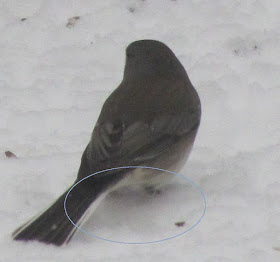Light comes from a source, but its absence is the origin of darkness. Without light darkness floods in from every direction, but darkness is given form called shadow when a light source is cast upon an object. Not only does shadow help define the object's shape, but it extends beyond that shape continuing in the direction of the light beams to create a cast shadow. Even when light is diffused the location of shadows tell us the direction of the light's source. In the photo below, faint shadows beneath the bird inform us that there is some light above it.
But when light is not diffused, we see two distinct images for each shape in it's path: the object itself and its cast shadow. Direct light beams cause the cast shadow to bend and travel along the contours of anything in its path. That shadow tells us the angle of the light beams, the shape of the object casting the shadow, and the contours of the surface on which the shadow is cast.
 |
| "Samwise" Terracotta sculpture Howard G. Hanson |
It's the cast shadow that tells the story of this snow covered landscape.
If we switch our attention from the fact of snow and images in the snow towards the shadows themselves, we realize that it's those shadows that tell us about a slight incline of the driveway, a rise on the right side and a drop-off on the left, that somebody has been walking in the snow and that there are trees nearby.
In fact, often the cast shadows will tell us about their surroundings without their images being visible. Look at Karin Jurick's painting of a bike rider.
If while constructing a painting we ignore the specifics of a cast shadow, whether caused by direct or diffused light, we lose an important essence of the story that those particulars tell and we cause the painting to communicate that something is missing. Rather than being added as an afterthought, carefully crafted cast shadows integrated into the painting from the beginning become an essential part of the painting's story.




No comments:
Post a Comment
I welcome your comments.